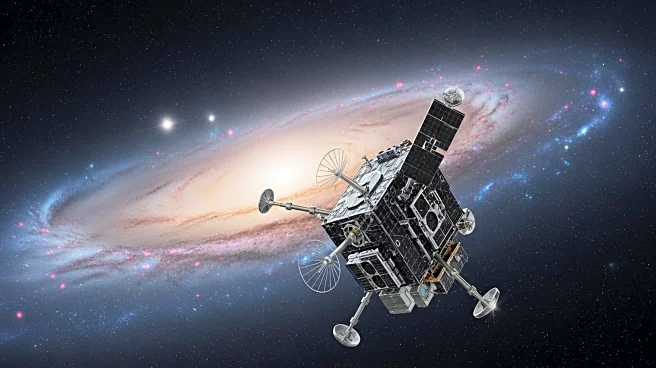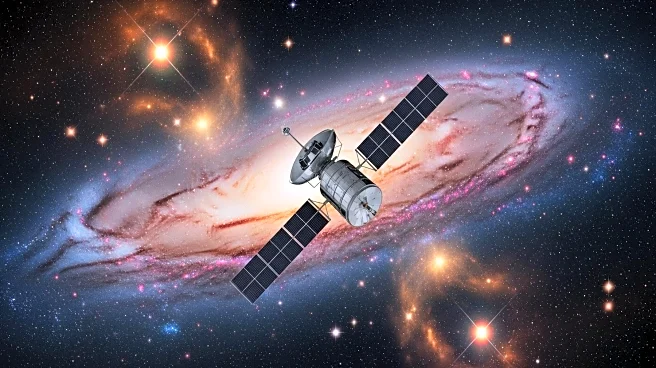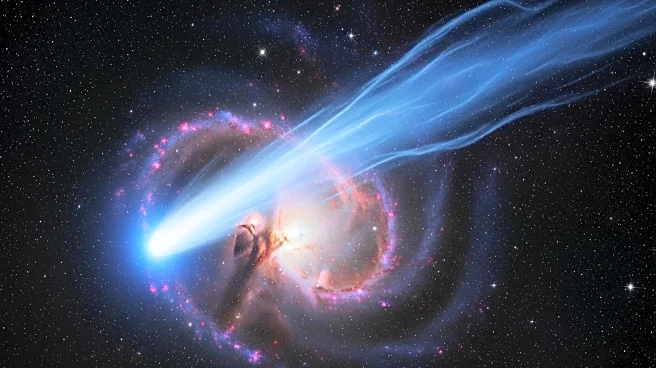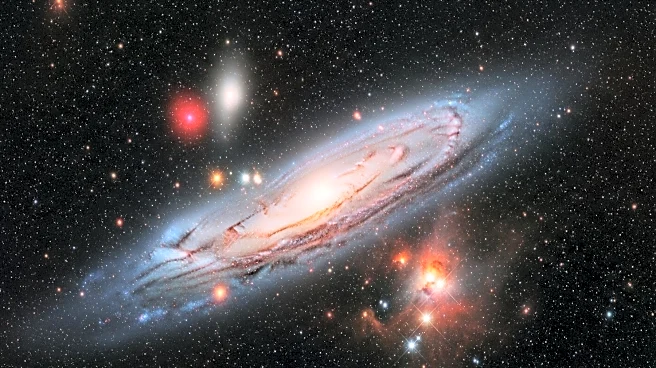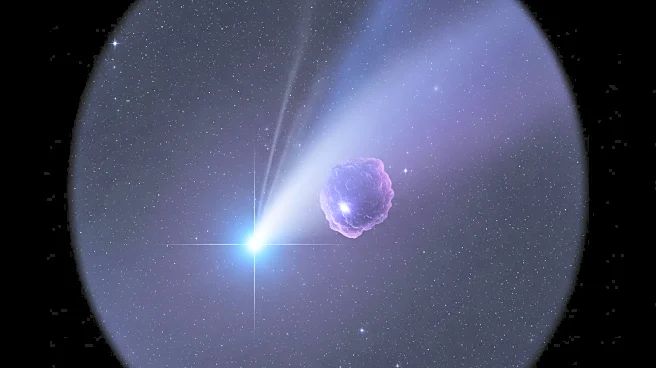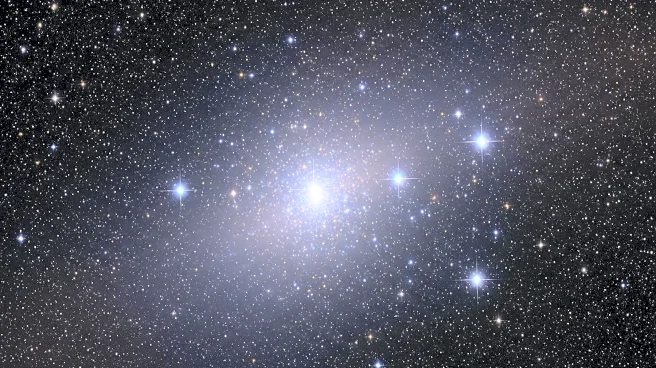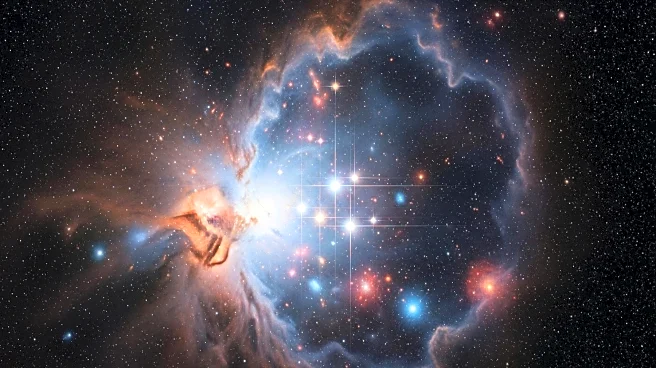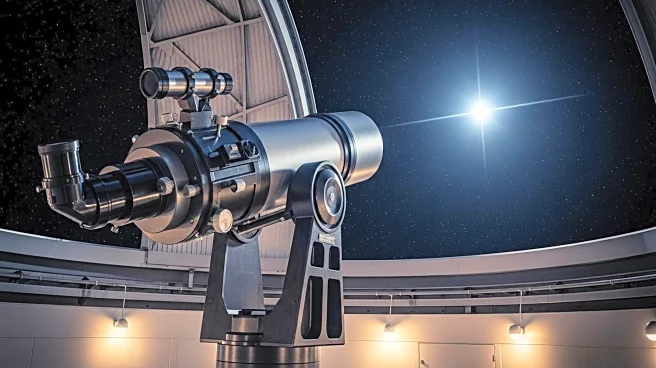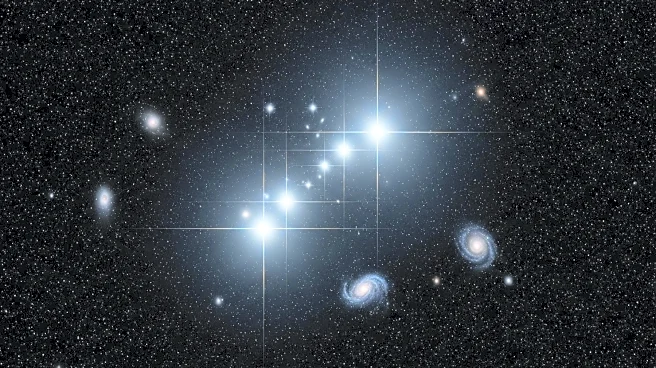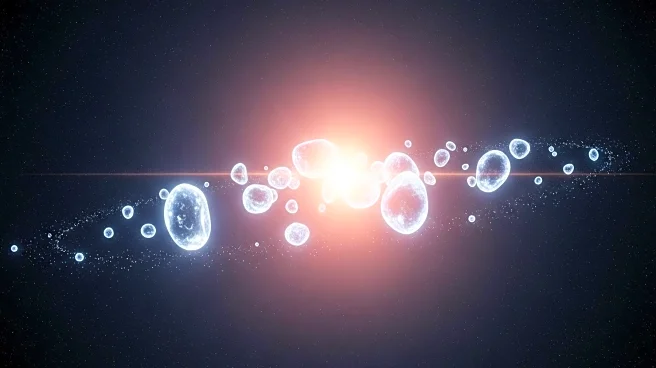What's Happening?
The European Space Agency's Gaia mission has released a groundbreaking 3D map of the Milky Way, featuring over 44 million stars. This map, the largest of its kind, includes detailed views of stellar nurseries and regions of ionized gas. The project, which began in 2014, aims to provide an accurate representation of the galaxy's structure. The map also highlights 87 rare O-type stars, known for their intense UV emissions. The Gaia team plans to expand the map further with new data expected in December 2026.
Why It's Important?
This 3D map represents a significant advancement in our understanding of the Milky Way's structure and composition. It provides astronomers with a valuable tool for studying star formation and the distribution of cosmic dust and gas. The map's detailed visualization of ionized regions offers insights into the lifecycle of stars and the dynamics of the interstellar medium. This project enhances our ability to explore the galaxy's vastness and complexity, contributing to the broader field of astrophysics.
What's Next?
The Gaia mission will continue to refine and expand the 3D map with additional data releases. The upcoming dataset in 2026 is expected to include even more stars and higher quality information, further enhancing the map's accuracy. This ongoing work will support future research and discoveries in galactic astronomy, potentially revealing new phenomena and deepening our understanding of the universe.

